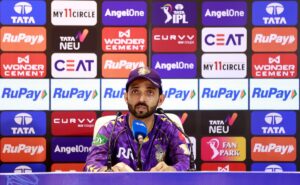
Lesser-known facts of Kamal Hassan: From inspiring Quentin Tarantino to becoming the first actor to receive Rs 1 crore remuneration
Arshdeep Singh: India’s Left-Arm Pace Solution for England Test Series
Table of Contents
As India prepares for their challenging five-match Test series in England, the selectors face a critical decision regarding their pace attack. Arshdeep Singh, the 26-year-old left-arm quick from Punjab, has made a compelling case for inclusion with his consistent performances in white-ball cricket and recent IPL displays. His exceptional ability to swing the ball both ways, particularly demonstrated in a stunning spell against Lucknow Super Giants in Dharamsala, suggests he could be the missing piece in India’s Test bowling lineup in English conditions.
The Dharamsala Masterclass
On a chilly evening in Dharamsala during IPL 2025, Arshdeep Singh produced what many consider one of the finest new-ball exhibitions of the tournament. His three-over spell dismantled Lucknow Super Giants’ top order, yielding impressive figures of 3-0-10-3 and showcasing the precise swing bowling that could be invaluable in English conditions.
The spell was a masterclass in adapting to conditions. Mitchell Marsh was undone by unexpected bounce, Aiden Markram had no answer to movement in both directions, and Nicholas Pooran was trapped by a perfectly executed inswinger. It was complete fast bowling display that demonstrated Arshdeep’s tactical intelligence and technical skill.
“For a change, there was movement in the starting overs. I really enjoyed it. In the second innings, the conditions get cold and the weather drops down, and it swings a bit.”
This performance wasn’t merely an isolated flash of brilliance but rather the culmination of steady development and refinement of his craft. The conditions in Dharamsala—cooler temperatures, some moisture, and a helpful surface—bear similarities to what bowlers might encounter in England, making his success there particularly relevant to the upcoming tour.
Evolution as a Bowler
What truly sets Arshdeep apart is his remarkable evolution from being primarily a white-ball specialist to a bowler seemingly ready for the longest format. His childhood coach, Jaswant Rai, notes a critical aspect of this development that was visible in the Dharamsala spell.
“What he showed on Sunday was maturity. Yes, there was juice in the surface, and three years ago, Arsh would have gone for that 3-4m length to get the swing, but now he didn’t. He has learnt the importance of hitting the 6m (good length) in these conditions.”
This technical maturity—understanding when to pitch the ball up for swing and when to hit the hard length—demonstrates a cricket intelligence that transcends formats. In the ongoing IPL season, Arshdeep has claimed 16 wickets while maintaining an impressive economy rate of 8, showing he can combine wicket-taking ability with control.
The Zaheer Khan Comparison
The comparison is inevitable and significant: Arshdeep Singh is arguably the best left-arm pace bowler India has produced since Zaheer Khan. This is not hyperbole but a recognition of a specific skill set that has been missing from India’s Test arsenal.
Like Zaheer, Arshdeep possesses the ability to swing the ball both ways with the same action, making him difficult to read for batsmen. His wrist position and seam presentation are reminiscent of Zaheer in his prime. Most importantly, he brings the left-arm angle that creates natural variation in a bowling attack predominantly featuring right-arm pacers.
India has lacked a quality left-arm seamer in Test cricket since Zaheer Khan’s retirement. This absence has been particularly felt in SENA (South Africa, England, New Zealand, Australia) countries where the angle and natural variation a left-armer brings can be decisive.
The value of a left-arm seamer in Test cricket goes beyond mere variety. The footmarks created by a left-arm pacer operating from over the wicket become natural rough for off-spinners to exploit later in the match—a tactical dimension that India has missed in recent overseas tours.
Why Arshdeep Suits English Conditions
England presents specific challenges and opportunities for fast bowlers. The combination of the Dukes ball, often overcast conditions, and pitches that offer movement make it a paradise for swing bowlers who can maintain consistent seam positions. Arshdeep’s technical attributes align perfectly with these requirements.
His natural ability to swing the ball is complemented by an increasingly refined understanding of when to search for swing and when to hit the deck. This adaptability is crucial in England, where conditions can change not just from match to match but from session to session.
Arshdeep’s experience bowling in the death overs of T20 cricket has forced him to develop precise control and execution under pressure. This skill translates well to Test cricket, where maintaining line and length consistently over long spells separates good bowlers from great ones.
The 26-year-old’s height and high-arm action generate bounce even from a good length, another attribute that could trouble English batsmen used to facing bowlers who rely predominantly on swing rather than bounce and seam movement in combination.
The Case for Test Selection
While Arshdeep was overlooked for the Border-Gavaskar Trophy in Australia last year, his consistent performances since then have strengthened his case for at least an India A tour selection, if not direct inclusion in the Test squad for England.
The selectors have several left-arm options including Yash Dayal and Khaleel Ahmed, both of whom spent time with the team in Australia. However, Arshdeep’s superior control, tactical awareness, and recent form place him at the front of the queue.
There are three ‘A’ games scheduled before the five-match Test series against England, providing the perfect opportunity for Arshdeep to demonstrate his red-ball credentials in English conditions before potentially stepping up to the Test arena.
| Left-Arm Option | Strengths | Test Readiness |
|---|---|---|
| Arshdeep Singh | Control, swing both ways, death bowling experience | Ready for A tour, potential Test inclusion |
| Yash Dayal | Raw pace, bounce | Needs more domestic experience |
| Khaleel Ahmed | Height, experience | Inconsistent in longer spells |
Technical Analysis: What Makes Him Special
At the core of Arshdeep’s effectiveness is his technical proficiency. His bowling action is repeatable and economical, with minimal strain despite generating considerable pace. This efficiency is crucial for the longevity required in Test cricket.
His wrist position at the point of release is particularly noteworthy. Unlike many bowlers who telegraph their variations through subtle changes in action, Arshdeep maintains the same wrist position whether bowling an outswinger or an inswinger, making him difficult to read for batsmen.
Arshdeep’s ability to hit the 6-meter length (good length) consistently comes from his disciplined training approach. According to his coach, he practices with markers on the pitch during training sessions, developing muscle memory for this crucial length that brings both edges of the bat into play.
Another technical strength is his seam position, which remains upright more consistently than many of his contemporaries. This upright seam is fundamental to generating movement off the pitch rather than just through the air, a distinction that becomes crucial as the ball ages during a Test match.
T20 Success: A Foundation for Test Cricket
Arshdeep’s excellence in T20 cricket, far from pigeonholing him as a white-ball specialist, actually provides a strong foundation for Test success. His performance in the T20 World Cup, where he was the joint-leading wicket-taker with 17 dismissals, demonstrated his ability to perform under the highest pressure.
Particularly noteworthy was his 19th over in the final against South Africa, where he conceded just 4 runs in a critical phase of the match. This exemplifies the mental fortitude required to succeed in Test cricket, where moments of high pressure demand clarity of thought and execution.
“The T20 format has helped me develop variations and understand when to use them. But my basics came from red-ball cricket, and that’s where my heart is. The dream is to wear the whites for India.”
Many of the world’s premier fast bowlers have followed a similar trajectory, establishing themselves in shorter formats before transferring those skills to Test cricket. Jasprit Bumrah’s journey from IPL sensation to Test match spearhead provides a template that Arshdeep could well follow.
Coach’s Perspective
Perhaps the most compelling endorsement of Arshdeep’s Test readiness comes from those who have worked closely with him throughout his development. His childhood coach, Jaswant Rai, believes the time is right for his ward to step up to the longest format.
“Wo pak chuka hai (He is ripe now). He should get a chance to play in the red ball. He can bring the balance that India has been looking for so long.”
This assessment is particularly significant coming from a coach who has observed Arshdeep’s development intimately. Rai’s comment that he “can’t coach him anymore” speaks volumes about how far Arshdeep has come in terms of understanding his own game and making adjustments independently.
The coach’s reference to Arshdeep being “ripe now” suggests that his technical development and mental maturity have converged at an optimal point for Test introduction. At 26, he is neither too young to lack experience nor too old to have limited future prospects—it’s the ideal window for a Test debut.
Bringing Balance to India’s Bowling Attack
Beyond his individual qualities, Arshdeep’s potential inclusion addresses a structural imbalance in India’s Test bowling attack. While India possesses world-class right-arm seamers in Jasprit Bumrah and Mohammed Shami, the absence of a quality left-arm pacer has been a tactical limitation, particularly overseas.
A left-arm seamer creates natural angle variations that can disrupt batsmen’s rhythm without necessarily changing line or length. This variation becomes particularly valuable when facing batsmen who settle into a groove against a uniform right-arm attack.
Why Arshdeep Singh Deserves England Test Consideration
- Exceptional ability to swing the ball both ways with the same action
- Technical maturity to adapt length according to conditions
- High-pressure experience from T20 World Cup and IPL death bowling
- Brings left-arm variety currently missing from India’s Test attack
- Creates rough for spinners to exploit in the later stages of Tests
- Recent Dharamsala spell demonstrated skill in conditions similar to England
- At 26, he’s at the ideal age to begin a Test career
- Strong endorsement from his longtime coach about Test readiness
- India A tour provides perfect platform to assess red-ball credentials
- Could be the best left-arm option since Zaheer Khan
As the selection committee led by Ajit Agarkar prepares to announce the squads for both the Test series and the ‘A’ tour in the coming week, Arshdeep Singh’s case for inclusion is compelling. His recent IPL performances, particularly the spell in Dharamsala, serve as a timely reminder of what he could offer in English conditions.
While a direct Test call-up might be considered bold, an opportunity with India A seems the logical next step. However, given India’s search for the perfect bowling balance overseas, particularly in England where the left-arm angle has historically troubled hosts, Arshdeep Singh might just be the missing piece of the puzzle in India’s quest for Test success abroad.






